Images, photos, film and illustrations
Images and films are an effective way of reaching out, reinforcing messages, affecting, and clarifying. Images can be photographs, but also illustrations, graphics, or image montages for still images or films. Today, there are also great opportunities to easily create visual content through generative AI.
AI-generated images and videos
The page AI-generated images and videos provide brief guidance on how to deal with AI-generated visual content in communication material when KI is the sender. This page focuses on guidance on “traditional” images and films, such as what to consider when choosing images and what options are available when purchasing or ordering images - but parts of the checklist are also applicable to AI-generated images.
Ask the following questions before choosing an image or film: What is the use of the image? Who is my audience? What do I want to achieve?
Checklist for images
1. Genuine and natural
Images and film should reflect and bring KI's operations to life. Images should preferably be taken in KI's environments and by employees and students "in action".
2. Relevant for the context
Images and film must have a connection to the subject being illustrated. For example, if you need to illustrate a conference about cancer research, choose a research-related image, an image of conference participants, or an image of the place where the conference will be held.
3. Professional and in high quality
Images and films must be characterised by high quality and meet the requirements for openness and accessibility imposed on public activities. The images should be in high resolution, have good lighting, contrast, and focus, and preferably be taken by a professional photographer.
4. Realistic – especially in labs and clinical settings
Double-check, for example, that jewellery, hair, and clothes follow the hygiene requirements for the specific environment.
Questions to ask the person in charge of the environment to be photographed:
- Should hair be tied back?
- Can you wear jewelry?
- Can you have nail polish?
- Relevant clothes – lab coat or not? Short/long sleeves?
- Should gloves, mouth guards, visors, or similar be used?
5. Useful and not only serve as decoration or to fill space
Graphics can help us visualize things that are difficult to explain using only photos or text. For example, if you want to show a procedure, a connection between things or development.
If possible, avoid images that feel unnatural and taken out of their contexts, such as over-arranged agency stock photos and clip art pictures.
6. Gender-conscious, norm-critical and inclusive
KI values diversity, different opinions, and many voices, which should be reflected in the image choice. Images should, for example, show the entire KI (both Campus Flemingsberg and Campus Solna), as well as show the breadth of KI's education and research environments (not just education with high application pressure).
Our target groups/visitors/users should be able to recognize themselves in our images. Therefore, strive to be gender-conscious, norm-critical (does the image reinforce existing norms, or do you challenge the norm in your images?), and inclusive in the image choice. This is important to consider, not least if AI is used to generate images, as research has shown that AI images tend to reinforce stereotypes.
Make a brief analysis before choosing an image:
- Does the image or text contain any gender stereotypes or restrictive norms?
- Who can feel included or excluded from the image?
Use images that promote equal rights and opportunities regardless of:
- Sex (How are different people portrayed? Active, passive, smiling or serious, etc.)
- Transgender identity or expression
- Ethnicity
- Religion or other belief
- Disability
- Sexual orientation
- Age
7. Free from alcohol and drugs
KI works for a drug-free work and study environment by distancing itself from alcohol, drugs, and other addictive substances, and this also applies to images. Exceptions are genre images to illustrate research in these areas.
8. Free from product placements
Avoid logos and marks on objects and clothing. If possible, avoid displaying advertisements or logos in the background.
Photographer and/or stock photos
Hire a photographer
For portraits, pictures of campus environments, and events, you can hire a photographer. There are two options:
- KI’s photographers Bildmakarna
- KI’s framework agreement for photography services
Stock photos from an external image bank
Generic images can be used when you want to describe a specific topic and KI does not have appropriate images. Stock photos should follow the checklist for images.
Authorization and copyright
Rights of use and copyright
You must have permission to use the images. If you use images from photo agencies or internet services, you need to make sure which usage rights apply to that particular image. In general, you almost always have to acknowledge the author of the image (photographer or source) visibly in the context of where the image is used. There are collections of images that have licenses that allow them to be used without first asking the author's permission.
Permission from persons appearing in the image or film
- All persons identifiable in a film or image must be asked for their consent to participate.
- Avoid disclosing sensitive personal data that participants may later regret.
- Participants who reproduce the personal data of others must have obtained their permission to share the data.
- No images with personal data in the background should be used.
The Legal Unit is responsible for GDPR at Karolinska Institutet.
Statement of consent
Accessibility
The messages in films and images on the web must be made accessible to people who cannot see or hear, or who for other reasons have difficulty understanding text or sound. In short, this means that you must use subtitles or alt-texts to explain what the image or film represents to those who cannot see it.
For more information on the accessibility of digital public services, see the pages Available films and Web accessibility – what is required of you as an editor.
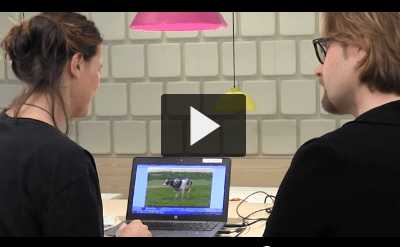
May I use this image?
Learn more about copyright and Creative Commons licenses. KI's University Library explains how to find and use images with free licences, in three instructive films.
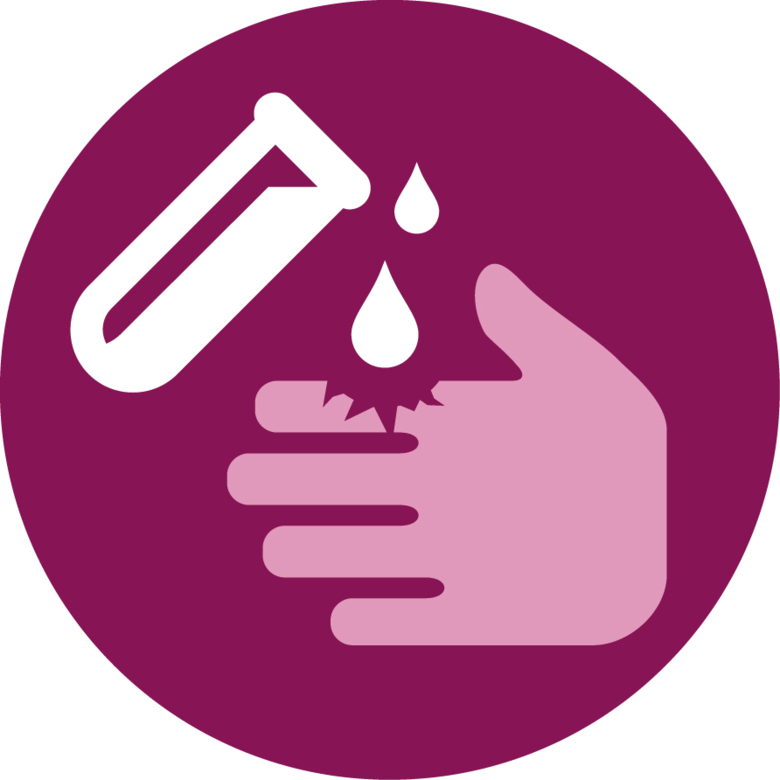
Illustrations
Illustrations are a good complement to text and photos when you need to clarify facts or visualise a topic that is difficult to interpret. Illustrations can describe processes, make instructions clearer and create interest in a simple, neat and appealing way.
Finding images
Free images with free licence
- KI:s mediabank
The mediabank is accessible by all KI employees and contains images that you can use free of charge. The photographer’s name can be found together with the image. You can also share photographic material from your department in the mediabank. - Wikimedia commons
Search for images that are found in the Wikipedia encyclopaedia, which are often free and do not require the permission of the copyright holder. Always double-check the user right that applies to use of the image outside Wikimedia. - Google's advanced image search
When you search using Google’s search engine, you can filter the results to find free-to-use images. - Flickr
Flickr is a social network where users can upload their pictures. When you search for images you can filter using a variety of user rights (Creative Commons licenses).
Buy images with a free licence
- Getty Images
Getty Images has a vast number of images at good prices, and is very useful when you need a genre image or illustration. You must set up your own account in the Getty Images library to buy images. - Science Photo Library
Image bank focussing on images and illustrations in research and healthcare; here too you must set up an account to buy images.
Common image file formats
| Format | Suitable for | About the format |
|---|---|---|
| JPEG | Photographs | Joint Photographic Experts Group (JPEG). Used primarily for photos and images used on the Internet. The format compresses the files very effectively, but with a loss of quality. |
| PNG | Icons, illustrations and graphics | Portable Network Graphics (PNG) is a format for digital images. Can be used for graphics. A PNG file can have a transparent background, which makes it particularly appropriate for use on the Internet. |
| GIF | Graphics | Graphics Interchange Format (GIF) are used for images and since they can contain a maximum of 256 colours they are suitable for simple graphics, but not photos. |
| TIFF | Photographs | Tagged Image File Format (TIFF) graphic format for pixel graphics and photographic images. An advantage of the format is that the colour, contract and brightness can be changed in the layout program. |
| EPS | Vector graphics | Encapsulated PostScript (EPS) is a general image format that is used for vector graphics as well aspixel graphics. EPS images are not affected when they are imported into a layout program. |
Examples of images
Examples of stock photos (genre images)

Buildings and environments
- Communicate a sense of what it is like to be at KI
- Airy and modern
- Create depth and perspective with exciting angles, for example from above
- Close-ups or details

Ceremonies, events, and meetings
- Capture a moment, for example when people meet
- Portray the mood, for example through colour tones or details that reflect the type of event
- People in the picture should be perceived as active and committed
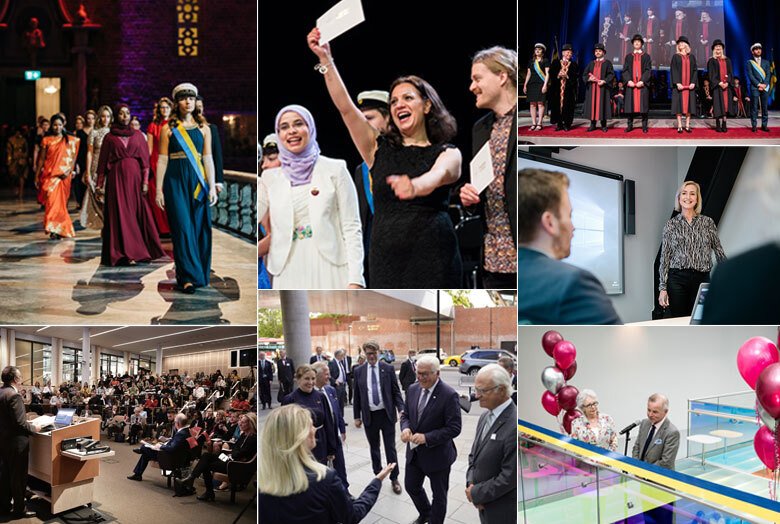
Research, labs, and clinical settings
- Cooperation between two or more people is preferable
- Depict the background and environment (avoid messy backgrounds)
- Detail images of research instruments or hands
- Feel free to use research images (microscope/cell images)
- Check, for example, that jewellery, hair, and clothes follow the hygiene requirements for the specific environment.
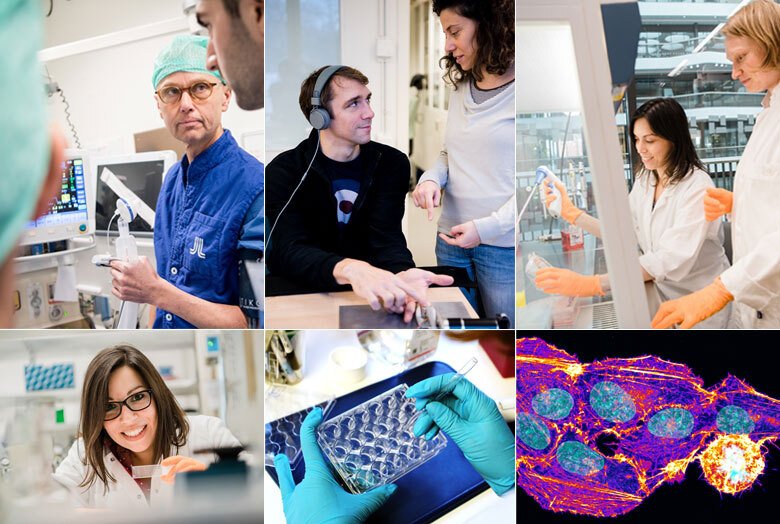
Portraits and group images
- Full-screen images and half-image portraits
- Depicted in a relevant environment (preferably not in a studio)
- No portraits cut-out with isolated backgrounds (transparent backgrounds)

Students and education
- Active images
- Modern education environments, if possible
- The images show commitment
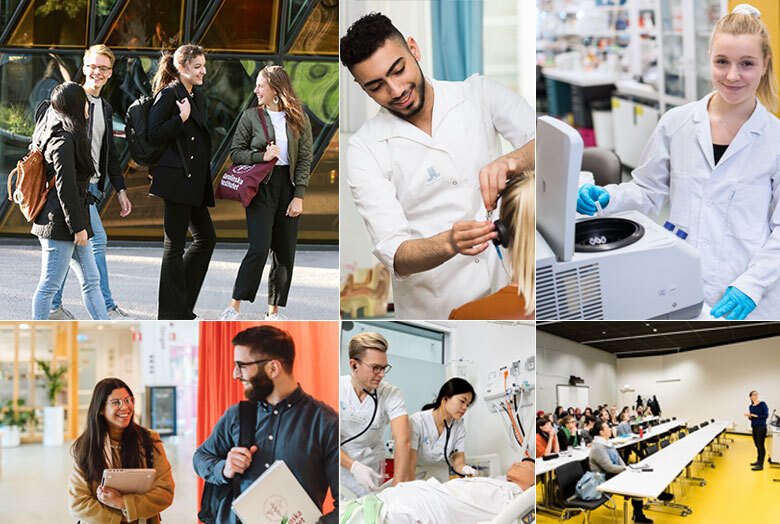
More information for logged in staff
There is more information for those of you working in the following groups
- UF.GVS.Kommunikationsavdelningen
